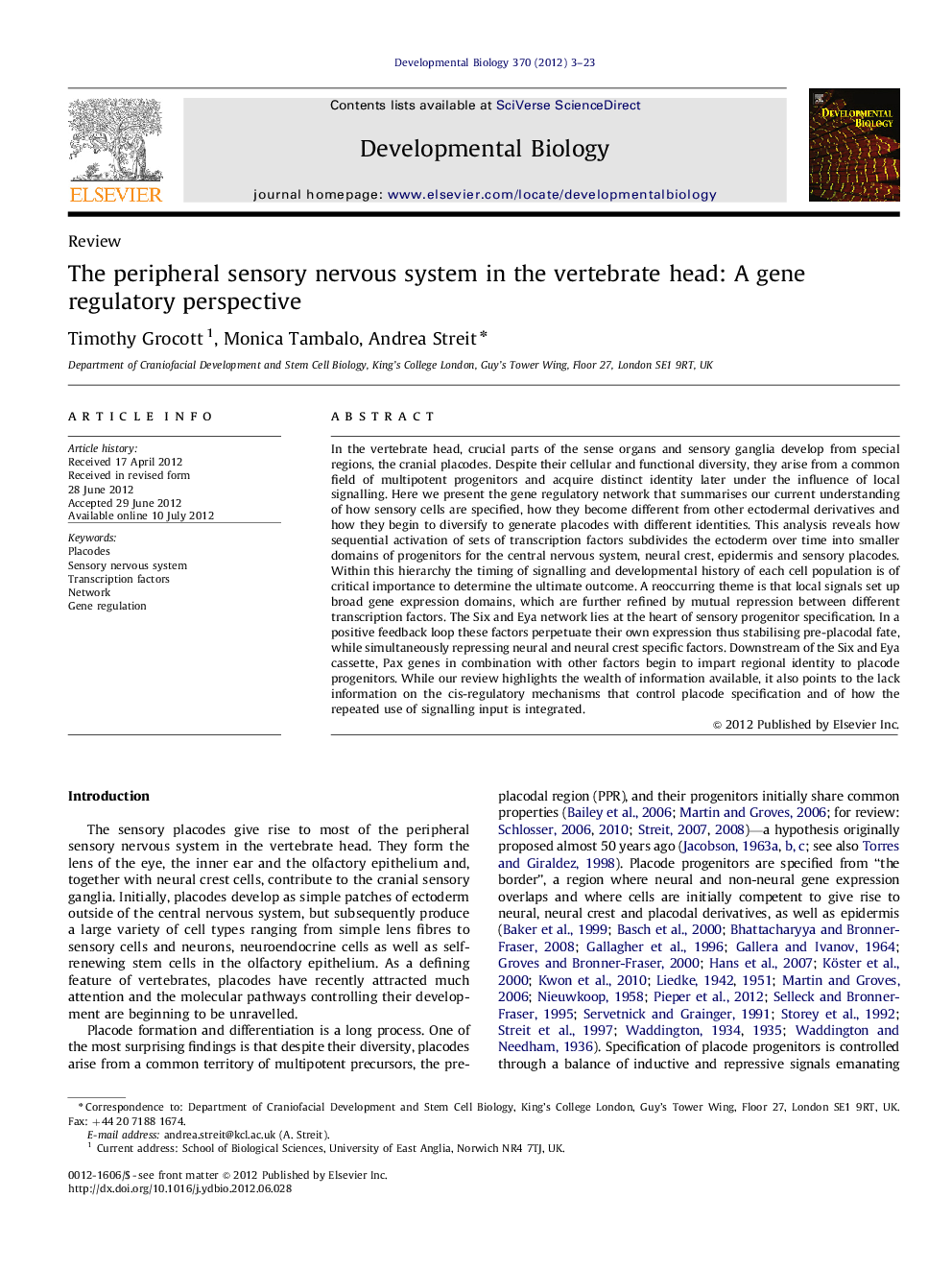| کد مقاله | کد نشریه | سال انتشار | مقاله انگلیسی | نسخه تمام متن |
|---|---|---|---|---|
| 2173278 | 1093709 | 2012 | 21 صفحه PDF | دانلود رایگان |

In the vertebrate head, crucial parts of the sense organs and sensory ganglia develop from special regions, the cranial placodes. Despite their cellular and functional diversity, they arise from a common field of multipotent progenitors and acquire distinct identity later under the influence of local signalling. Here we present the gene regulatory network that summarises our current understanding of how sensory cells are specified, how they become different from other ectodermal derivatives and how they begin to diversify to generate placodes with different identities. This analysis reveals how sequential activation of sets of transcription factors subdivides the ectoderm over time into smaller domains of progenitors for the central nervous system, neural crest, epidermis and sensory placodes. Within this hierarchy the timing of signalling and developmental history of each cell population is of critical importance to determine the ultimate outcome. A reoccurring theme is that local signals set up broad gene expression domains, which are further refined by mutual repression between different transcription factors. The Six and Eya network lies at the heart of sensory progenitor specification. In a positive feedback loop these factors perpetuate their own expression thus stabilising pre-placodal fate, while simultaneously repressing neural and neural crest specific factors. Downstream of the Six and Eya cassette, Pax genes in combination with other factors begin to impart regional identity to placode progenitors. While our review highlights the wealth of information available, it also points to the lack information on the cis-regulatory mechanisms that control placode specification and of how the repeated use of signalling input is integrated.
► Sequential activation of transcription factor networks subdivides the ectoderm.
► Temporal sequence of signals and transcription factors determines cell fate.
► Positive feedback loops and mutual repression stabilise cell fate.
Journal: Developmental Biology - Volume 370, Issue 1, 1 October 2012, Pages 3–23